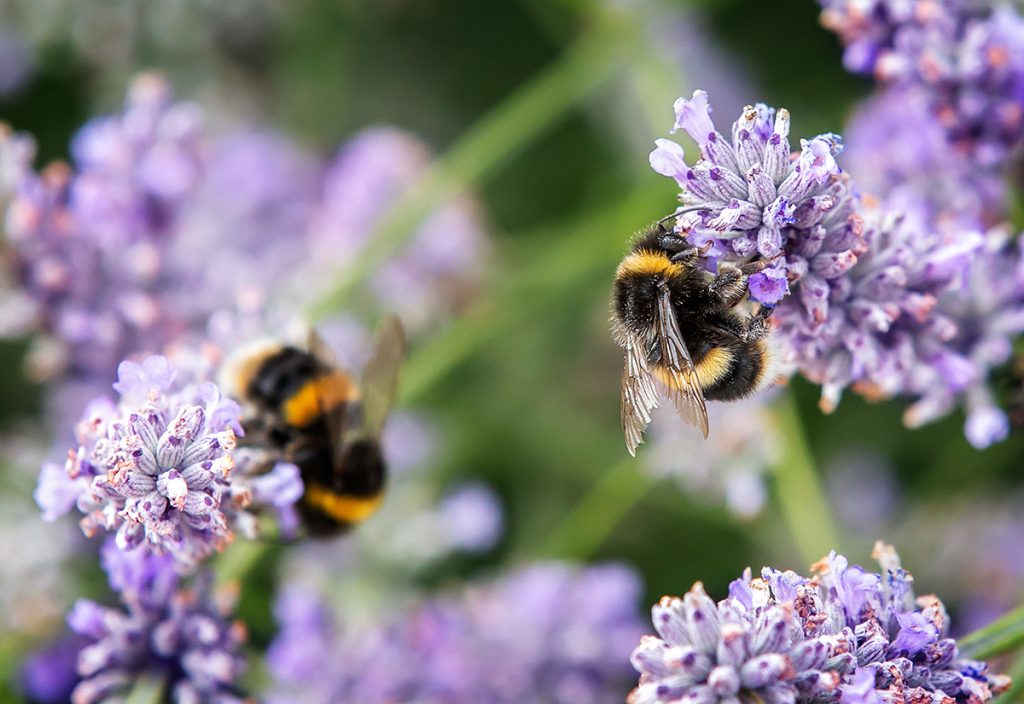It’s no secret that pollinator species across the US are endangered, but the massive and potentially catastrophic consequences of pollinator extinction may not be as well known.
Honey bees, native bees, butterflies, moths, wasps, and other insects pollinate over three-fourths of the world’s flowering plants and 35% of the world’s food, making these creatures critical for continued food security all around the globe.
In the United States alone, pollination is essential for the production of over 90 commercial crops, and accounts for over $15 billion annually in US crop production. In fact, people in the US depend on pollinators, especially honey bees, for one of every three bites of food they take.
However, due to factors such as viruses, pesticides, parasites, and a severe lack of appropriate habitat and nutrition, these important pollinator populations have been on a swift decline for the last two decades.
Without pollinators, the effects on the country’s food supply and economy would be disastrous.
Fortunately, the Conservation Reserve Program (CRP) is taking critical steps to curb the existing damage to these species and to further improve their habitats, allowing pollinator communities to grow and flourish on CRP-enrolled lands.
Pollinator Habitat Initiative (CP-42)
The Pollinator Habitat Initiative, or CP-42, is a CRP initiative focused on saving these crucial insects from extinction.
By establishing and maintaining ground cover on CRP lands using seed mixes containing beneficial plants for pollinators like wildflowers, legumes, or shrubs, CRP is providing both vital nutrition for these important species and a robust habitat. Wildflowers, forbs, and other plants that attract pollinators are grown within conservation covers, providing necessary nutrients to these insects.
CP-42 practices can be established on whole fields, blocks, or strips within a field, and with colorful wildflowers growing across your landscape, these conservation covers make for a dazzling view.
Environmental Benefits
These practices are not just favorable for pollinators, but for other species as well. Pollinator habitats attract natural predators of crop pests, allowing for a reduction in the use of pesticides on crop land. Additionally, many bird and game species benefit from these habitats, furthering wildlife conservation efforts.
Like all CRP practices, CP-42 also contributes to healthier soil, reductions in soil erosion, and improved water quality through the use of conservation cover.
Financial Benefits
On top of the benefits for the pollinators and the environment, there are a number of financial incentives for establishing CP-42 practices on your farmland.
Through the initiative, participating farmers can receive 10 years of annual rent payments, 50% cost-share payments for the expenses of establishing the practices on your land, and a sign-up bonus of up to $150 per acre.
Participating in CRP and enrolling your land in a promising initiative like CP-42 not only provides economic benefits to you and your farm but also helps to safeguard the security of the country’s food supply.
Enroll in CRP to save your pollinators
Since 2006, FDCE has specialized in establishing pollinator habitats on CRP land. If you’re considering enrolling in CRP, partnering with FDCE is a great way to navigate the program’s policies, practices, and paperwork, so that you can establish your pollinator habitat easily and efficiently. Contact us today to learn more about how FDCE can help you enroll your farm in CP-42 and save the bees!

